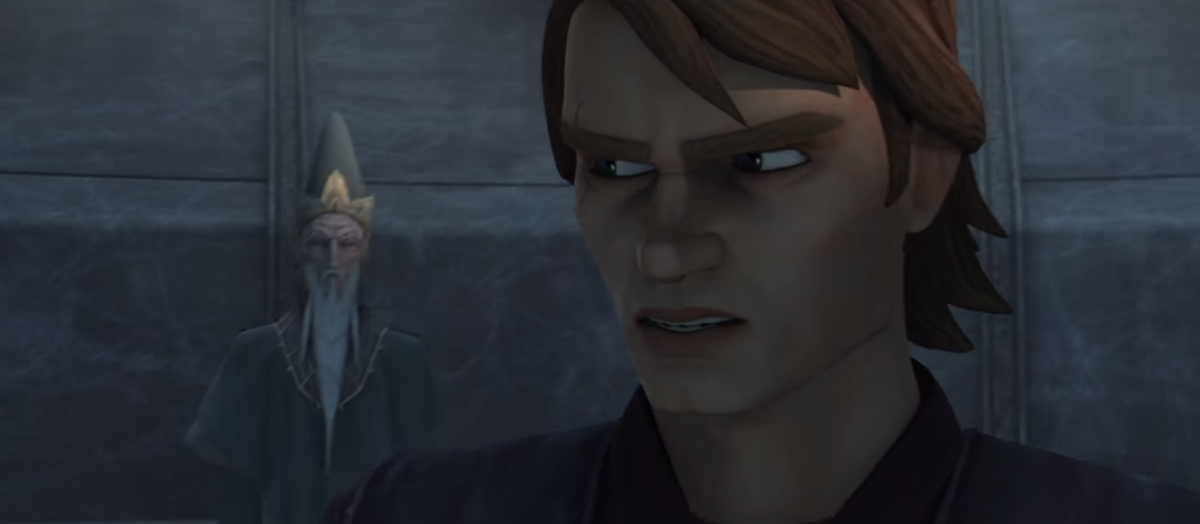Here’s Why the Mortis Arc on ‘The Clone Wars’ Is so Important
The Clone Wars is not something to toss aside if you’re a Star Wars fan that wants to know every little thing about the franchise. Even if the prequels weren’t your thing, The Clone Wars consists of several seasons that dive into the war (duh), the politics around it all, and the Clone troopers who are the backbone of the Republic effort. In addition, the characters of Obi-Wan Kenobi and Anakin Skywalker are fleshed out so much more.
One of their biggest missions — and one of the most important arcs in the whole series — is the Mortis arc in Season 3. It’s still one of the fans’ favorites to look back on, and it also had major implications for three main characters. Here’s why it’s so important to Star Wars, overall.

The Mortis arc dives into ‘Star Wars’ lore more than any other in the series
Here’s a quick overview of the Mortis arc. Anakin, Obi-Wan, and Ahsoka Tano are sent on a mission to investigate a remote signal that dates back centuries. Mortis is thought to possibly be the origin place of the Force and holds strong energies within it. It’s said to be outside of space itself, which makes sense considering no time passes while the characters are on the planet.
The signal was actually broadcast by the Father, a strong Force wielder. He and his children, the Daughter and Son, who represent the Light and Dark Sides of the Force, are the only ones on the planet. The Father is the balance on the planet, but he’s dying and wants the Chosen One (Anakin) to balance it in his place. Instead, chaos ensues and the Son tries to turn Anakin. The arc consists of four episodes, starting with Episode 15 in Season 3.
Matt Lanter, who voices Anakin Skywalker in The Clone Wars, recently spoke to SYFY WIRE’s Jabba the Pod podcast, and said he loved the Mortis arc because it was “so different.”
“I think it’s probably safe to say that we don’t have another episode coming up that is so cerebral as Mortis was. And kind of delves into mythology as much,” Lanter said. “I thought it was a really unique arc.”
It solidified the fact that Anakin Skywalker was the Chosen One
Lanter also pointed out that the arc highlighted parts of Anakin’s story that the show hadn’t explicitly called out before. “Another reason I really loved the Mortis arc is that we got to take Anakin to some really unique places that I hadn’t gotten to do up until that point,” he said. “So that was a really fun kind of special arc that really stands out.”
One major thing was Anakin being the Chosen One. It’s mentioned quite a few times in the prequels, but not as often in The Clone Wars. This is probably just because there are so many episodes, it doesn’t need to be reiterated that often. But the Mortis arc plays on it in a major way, by making it the reason the Father brings Anakin there in the first place.
There’s a test he has to complete and the fact that he’s the Chosen One is mentioned a lot in this arc (which might be why it’s hardly mentioned again). But either way, if there was any doubt about Anakin being that guy, all doubt was thrown away after this arc.
The arc showed just how strongly Anakin was attached to Ahsoka, foreshadowing how her departure affects him later
One major moment on Mortis is when Ahsoka falls under the Son’s spell to distract Anakin. The Son turns her evil, and she fiercely fights Anakin and Obi-Wan with yellow, Sith eyes. It’s very obviously not Ahsoka in her right headspace, but she is out for blood.
After doing the Son’s bidding, he kills her which leaves Anakin distraught. He would barter or do anything at that moment to save her. The Daughter eventually gives up her life source for Ahsoka, which Anakin transfers into his Padawan. In any normal brother/sister, guardian/child relationship, Anakin’s reaction would have been expected. However, Jedi aren’t supposed to be attached to anyone, and Ahsoka’s death showed just how bad Anakin was with this rule.
It also foreshadows just how much Ahsoka leaving the Jedi Order will affect Anakin. Her departure in Season 5 added to his long list of grievances and his disillusionment with the Jedi Order. Ultimately playing a part in his turn to the Dark Side.
The Mortis arc is the best at showcasing Anakin’s rising darkness and path to the Dark Side
Lastly, their whole time on Mortis hit home just how Dark Anakin was going to get. Anakin’s dark tendencies show up often in the show, which is another reason why it’s so valuable to his overall story. In this arc alone, you have Ahsoka’s vision of an older version of her warning Ahsoka of master. And Anakin has a vision as well, when he confronts the Son.
Anakin sees all the pain and suffering he’s going to cause — his duel on Mustafar against Obi-Wan, Padmé choking, and all the younglings he’ll murder — and he sides with the Dark Side to stop it all from happening.
This is a stark contrast to his choices in Revenge of the Sith. When Anakin is faced with Padmé’s potential death, he becomes obsessed with any way to save her, letting his fear fester. This allows him to become Darth Vader and side with Palpatine.
In both instances, he goes Dark. However, Anakin is more inclined to the Light Side here and sees no other way than to become Dark to stop that future from happening. But in Revenge of the Sith, Anakin is much closer to the Dark Side and becomes a Sith for selfish gain and also because his mind is so warped by deception and darkness by then.
The Mortis arc is, overall, one of the most fascinating storylines The Clone Wars ever did. It added so much to the lore of Star Wars and grounded Anakin’s story, and solidified his tragic end.


